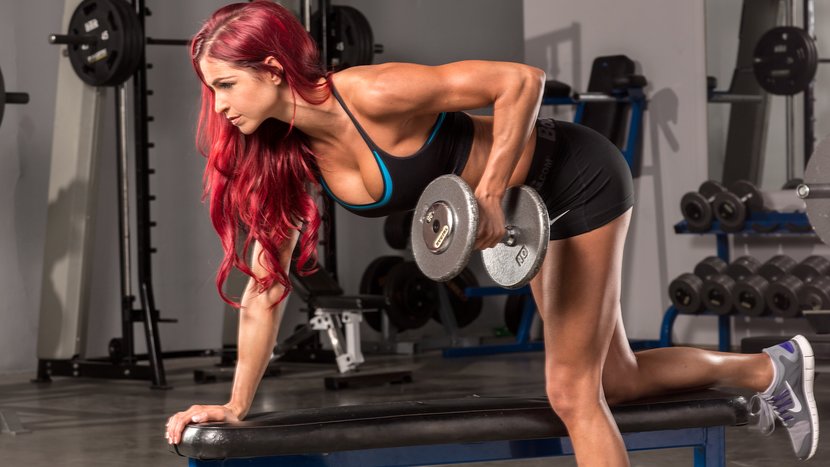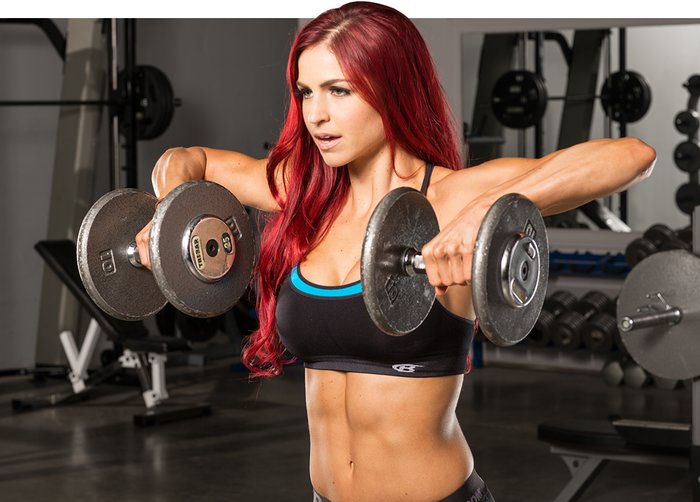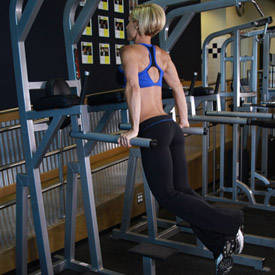
Gorgeous gams and a bodacious booty aren't the only prizes you can win with a great workout program. Michelle Obama, Cameron Diaz, and Jessica Biel are a few public figures who have impressed us with their enviable biceps and rockin' delts.
It's no joke, ladies. To build a better-looking, stronger, healthier body, you need to lift for your upper body!
Beauty Vs. The Bulk
It is a common misconception that upper-body resistance exercise will cause women to pump up Arnold-style. Fear not, ladies! Women's hormones and physiology such as size and shape determine our strength and muscular development. You're not a professional bodybuilder. You don't have to worry about looking like one.
In fact, women only have on average roughly one-tenth the testosterone that men do. Women with higher testosterone levels relative to other women may tend to develop more muscle at a faster rate, but all women can train their upper body without turning into Hulk-ettes.
To enhance your physique and create that athletic shape many women crave, you need to build your back, biceps, triceps, and delts! Size aside, the benefits to upper-body resistance training are numerous. Here are just a few reasons you should add it to your training regimen!
1. Bone Modeling
Bone modeling and remodeling is the process by which bone adapts to load by changing size and shape and removing weak or damaged bone tissue. When muscles contract against bone, it creates stress that causes bones to strengthen against the contractions.[1] The stronger your muscles get, the stronger your bones must become to handle muscle contractions. Bone modeling helps prevent fractures and insures against osteoporosis.
2. Connective Tissue
Ligaments, tendons, and cartilage are what hold your bones together. These joints are at risk of injury when they become unstable.[2] Upper-body resistance training strengthens connective tissue in the elbows, shoulders, neck, spine, wrists, and hands, improving joint integrity, stability, and injury prevention.

3. Muscle Growth And Fat Loss
Strength exercises increase lean body mass while decreasing fat stores. The greater your proportion of lean mass to fat mass, the more metabolically active your body becomes. A metabolically active body will have increased metabolic rate, fat oxidation, and energy consumption in the form of calories.[3] In other words, you burn more calories and fat simply by carrying more muscle!
4. More Moxie
All things considered, having a strong, shapely upper body improves self-esteem and puts you in the ultimate badass category. In a study published in "American Journal of Health Promotion," researchers found that women who participated in resistance training three days per week improved their body image more than women who walked three days per week (although walking is still much better than sitting on your butt all day).[4] Being strong empowers both your mind and your body.
5. The Ability To Kick Ass Every Day
Though we like to associate strength with killing it in the gym, a powerful upper body makes everyday tasks much simpler. You can rearrange your living room furniture without help, carry all your grocery bags in one trip, move boxes without getting a backache, and so much more! Being strong not only feels great, it grants you independence so you can take on bigger daily challenges with ease.
The Get-More-Awesome Plan
These workouts are broken down into push/pull sequences. These workouts are split so that you train both the upper-body push and pull muscles equally during the week.
- During Workout A, you'll concentrate on pushing, which uses the pectoral muscles as primary movers. You'll also rely on your shoulders, trapezius muscles, and triceps for assistance.
- During Workout B, you'll do pulling exercises. These moves involve a large network of muscles that cover your back including the trapezius and rhomboids at the top of the back, the latissimus dorsi in the center of the back, and the erector spinae that run down to the bottom of the back.
- Other small muscles work during these exercises, along with the biceps muscles in the arms.
I recommend performing each workout once per week, three days apart, for 4-6 weeks. You can work in lower-body days between these workouts.

References
- Seeman, E. (2009). Bone Modeling and Remodeling. Critical Reviews in Eukaryotic Gene Expression, 19(3), 219-233.
- Stone, M. (1988). Implications for connective tissue and bone alterations resulting from resistance exercise training. Medicine & Science in Sports & Exercise, 20(5 Suppl), S162-S168.
- Heijden, G., Wang, Z., Chu, Z., Toffolo, G., Manesso, E., Sauer, P., & Sunehag, A. (2010). Strength Exercise Improves Muscle Mass and Hepatic Insulin Sensitivity in Obese Youth. Medicine & Science in Sports & Exercise, 42(11), 1973-1980.
- Tucker, L., & Mortell, R. (1993). Comparison of the Effects of Walking and Weight Training Programs on Body Image in Middle-Aged Women: An Experimental Study. American Journal of Health Promotion, 8(1), 34-42.
Original article and pictures take www.bodybuilding.com site
Комментариев нет:
Отправить комментарий